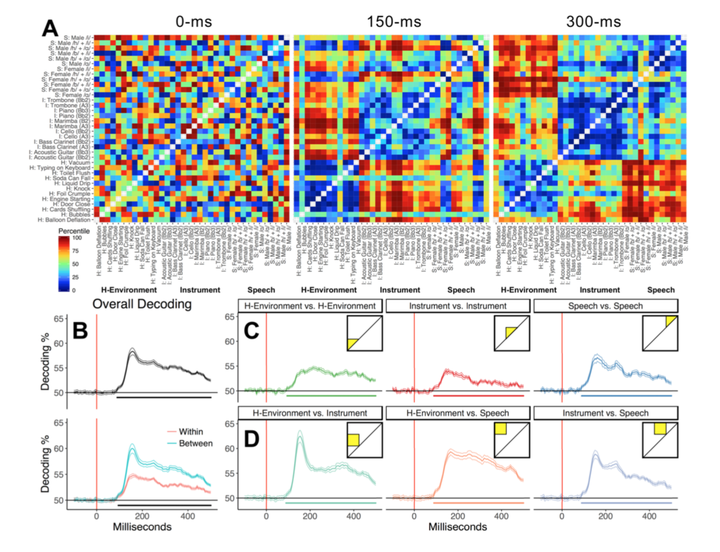The rapid emergence of auditory object representations in cortex reflect central acoustic attributes

Abstract
Human listeners are bombarded by acoustic information that the brain rapidly organizes into coherent percepts of objects and events in the environment, which aids speech and music perception. The efficiency of auditory object recognition belies the critical constraint that acoustic stimuli necessarily require time to unfold. Using magentoencephalography (MEG), we studied the time course of the neural processes that transform dynamic acoustic information into auditory object representations. Participants listened to a diverse set of 36 tokens comprising everyday sounds from a typical human environment. Multivariate pattern analysis was used to decode the sound tokens from the MEG recordings. We show that sound tokens can be decoded from brain activity beginning 90 milliseconds after stimulus onset with peak decoding performance occurring at 155 milliseconds post stimulus onset. Decoding performance was primarily driven by differences between category representations (e.g., environmental vs. instrument sounds), although within-category decoding was better than chance. Representational similarity analysis revealed that these emerging neural representations were related to harmonic and spectrotemporal differences among the stimuli, which correspond to canonical acoustic features processed by the auditory pathway. Our findings begin to link the processing of physical sound properties with the perception of auditory objects and events in cortex.